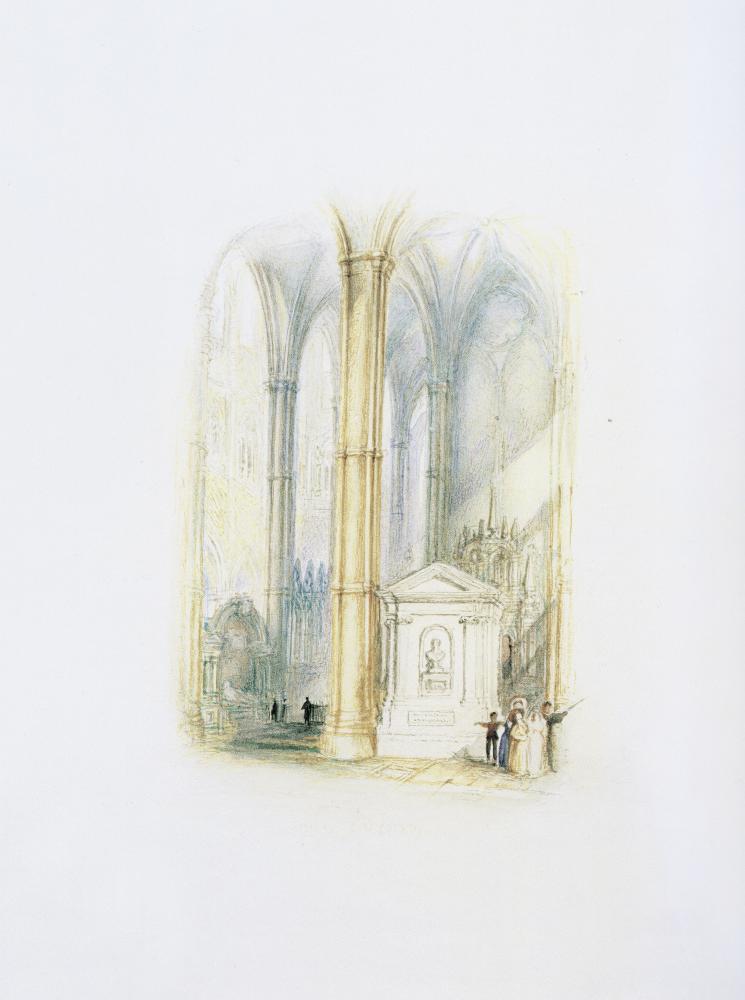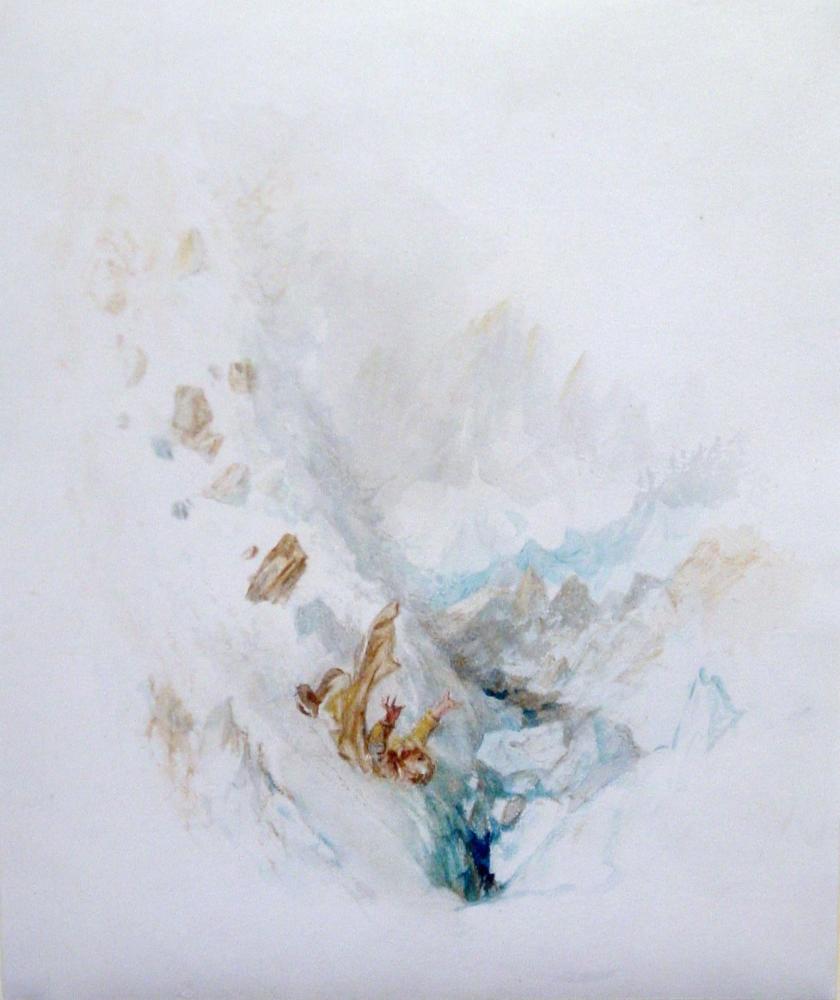J.M.W. TURNER R.A.
(1775-1851)
The Gate of Theseus, Athens
Engraved: E. Finden for Byron's 'Life and Works', Vol. VII, 1832-4
Provenance
John Ruskin
Henry Acland and by descent
Literature
A. Wilton, The Life and Work of J.M.W. Turner, 1979, no.1220 (as untraced);
L. Herrmann, Turner Prints: The Emgraved Work of J.M.W. Turner, 1990, p.267
J. Piggott, Turner's Vignettes, 1993, pp.44, 46-47, 93, Appendix B, p.99, no.60 (as untraced)
This watercolour, which once belonged to Ruskin, Turner's greatest champion, has only recently re-emerged. It is one of a series of watercolours commissioned from the artist c.1830 by John Murray to illustrate a seventeen volume edition of Byron's Life and Works, which was published 1832-4. As with earlier projects of a similar nature, publishers were eager to capitalise on the added attraction that Turner's illustrations gave even to the work of celebrated authors. So popular was this edition of Byron that Murray claimed it to be a 'success unprecedented ... in the annals of British literature'.
Jan Piggott had described this vignette as 'Turner's most interesting design in the series'. Engraved as the frontispiece for Volume VII, which introduced the poems in the Life and Works, this composition was conceived as a monument to Byron's memory, the triumphal arch serving as a metaphor for the poet's achievement. The seated girl to the right may allude to the last poem in Volume VII, The Maid of Athens. The plume of white smoke rising from the corner of the Acropolis, the fallen fluted sections of columns and the fragment of a metope lying on the ground, surmounted by a carved anthemion, suggest an elegiac mood: grief at the death of Byron, and regret for the contemporary political state of Greece, suffering under Turkish suppression of political and religious freedoms. Turner's longstanding interest in Greek history and myth had inspired paintings from as early as 1802. Like other artists of the day, he was deeply impressed by the Elgin marbles, which he had been to admire as soon as they had arrived in London in 1806; the fallen metope shown here, depicting the battle of the Centaurs and Lapiths, may well have been copied from one of the casts of the Parthenon frieze which he kept in the hall in Queen Anne Street.
Turner's political sympathy for the state of modern Greece had already been expressed in his vignette of The Acropolis, Athens, 1822, for The Giaour, his earliest illustration to Byron in watercolour, made for his friend and patron Walter Fawkes, 'Tis Greece - but living Greece no more'; in front of the Acropolis, symbol of a once-glorious city state, lies a fragment of the Parthenon frieze (perhaps the same as in The Gate of Theseus) and two manacled Greek slaves with their Turkish master. Here, in The Gate of Theseus, Turner may be again alluding to the troubled history of Athens, for the arch was not strictly Greek, but bore an inscription which stated that Athens was not the city of the Greek hero Theseus, but Hadrian's, and thus the first appropriation of Greece by a hostile enemy. The parallel with the contemporary subjugation of the nation by the Turks was thus subtly underlined. It is also true, however, that the Gate was very near the Capuchin convent where Byron had stayed in 1810, and thus a monument he must have known very well. Turner devoted special attention to the actual locations where the poet had lived or visited, very much in the spirit of Byron himself, who noted that 'I live not in myself but I become/ Portion of that around me' (Childe Harold, Canto III).
Turner himself never visited Greece. He was thus dependent on sketches provided by others, in this instance possibly William Page (1794-1872), a landscape artist who travelled in Greece and Turkey between 1816-1824. John Murray's accounts show payments of £28.7s for the watercolour and the original drawing, and £37.5s.6d for the engraving. Turner supervised the engraving process minutely, as can be seen from the surviving annotated engraver's proofs.


